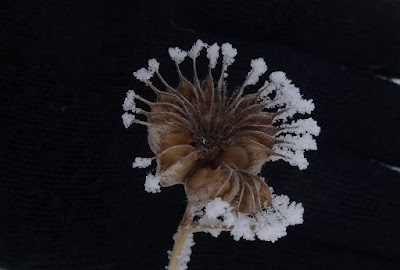Note: This is a non-native plant that can compete with native wildflowers. Letting it grow here will reduce the good quality wildlife habitat in the natural wetland around our pond. We will be removing its seed heads to prevent proliferation.
Showing posts with label non-native. Show all posts
Showing posts with label non-native. Show all posts
7/15/2021
mulleins
6/20/2021
crown vetch
A creeping plant that was used in the past as erosion control on embankments and roadsides, Crown Vetch Securigera varia is sprinkled among the grasses and rushs around the pond. Pretty lavender and purple blossoms among the greens, but it can take over native plants in this area.
Since this is a non-native invasive plant that can compete with native wildflowers, we will be removing it or cutting it back.
1/10/2021
velvetleaf
Many plants, which bloom and fruit in the warm growing season, stand bravely throughout the winter to ensure its seeds are fully distributed. This fruit capsule opened as it dried out in Autumn, and seeds have been coaxed out by the breeze. Now, it stands despite snow and hoarfrost.
Velvetleaf Abutilon theophrasti blooms in late summer with orange-yellow flowers on stems and leaves that really look and feel like they are cloaked in velvet. There were a few growing in the riparian buffer around the pond, but we pulled them because this plant is not native. It can form dense monocultures in place of native plants, suck large quantities of water and nutrients from the soil, and can inhibit germination of other plants.This in one of the plants that probably spreads from nearby crop fields, and that we try to keep out of the pond area.
7/06/2020
knapweed

Unfortunately, everything that looks appealing is not a good thing.
This plant opened its blooms this week with a pretty show of purple among the other wildflowers in the pond area. We had watched this plant through Spring because we did not see it last season here.
Despite its interesting bloom, Spotted Knapweed Centaurea stoebe is on the Minnesota prohibited weed list. Knapweeds are invasive plants that can out-compete native plants with chemicals that poison the soil and inhibit native plants.
Note: This is a non-native invasive plant that can compete with native wildflowers. Letting it grow here will reduce the good quality wildlife habitat in the natural wetland around our pond. We will be removing it.
Subscribe to:
Comments (Atom)



